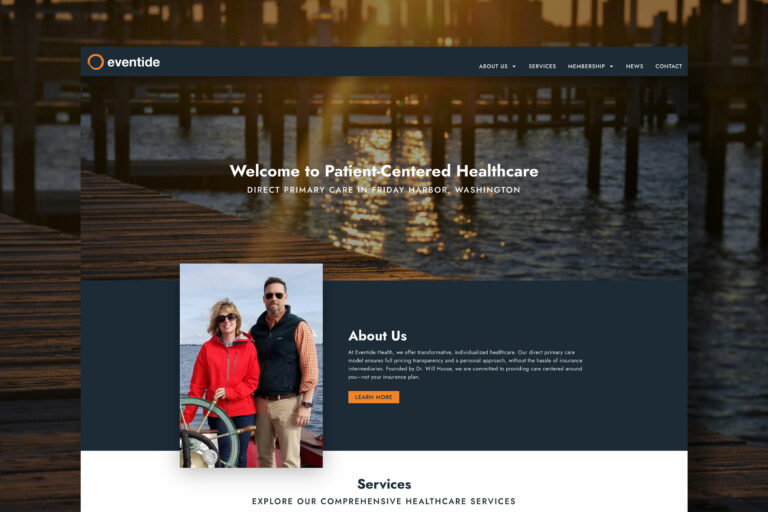In today’s digital age, the significance of a website cannot be overstated. For many, it’s the first interaction point with a brand, business, or individual. Whether you’re a multinational corporation, a budding entrepreneur, a passionate blogger, or a hobbyist showcasing a portfolio, your website serves as your virtual storefront. It’s the digital equivalent of a brick-and-mortar shop’s window display, inviting visitors in and offering them a glimpse of what you have to offer.
Launching a website is not the end of a journey but the beginning of an ongoing relationship with your audience.
The desire to make this digital storefront as attractive and flawless as possible is natural. After all, in a world where attention spans are dwindling, and competition is just a click away, standing out is paramount. This has put immense pressure on businesses and individuals alike to present a pristine, error-free facade. Every pixel, every line of code, and every piece of content is scrutinized, often leading to endless revisions and delays.
However, believing that a website must be impeccable before it sees the light of day is a double-edged sword. While striving for excellence is commendable, waiting for perfection can be a trap. It’s akin to a shopkeeper who keeps polishing their window display but has yet to open the doors to customers. The world never sees the value inside because the exterior is never deemed ‘ready.’
This quest for the perfect website can stem from various fears: fear of criticism, fear of not measuring up to competitors, or even the fear of the unknown reactions from the vast online audience. But it’s crucial to remember that perfection is subjective. What seems flawless to one might seem lacking to another. Moreover, the digital realm is ever-evolving. Today’s cutting-edge design might seem outdated in a year. A feature that’s innovative now might become standard fare soon.
Given this dynamic nature, it’s essential to view a website not as a static, one-time project but as a living, breathing entity. It’s meant to grow, adapt, and evolve. Just as businesses pivot, learn, and develop, so should their digital presence. Embracing the idea of a website as a work in progress allows for flexibility, adaptability, and, most importantly, continuous improvement based on real-world feedback.
So, as we delve deeper into the myth of the perfect website, let’s remember that while striving for excellence is vital, waiting for an elusive perfection can hold us back. It’s time to shift the focus from perfection to progression, from flawless launches to continuous evolution.

The Pressure of Perfection
In our interconnected digital world, first impressions matter immensely. A website often serves as the first point of contact between a brand and its potential customers. As a result, there’s a prevailing belief that this digital introduction must be flawless, setting the stage for all future interactions.
Several factors contribute to this pressure:
- Comparative Analysis: With easy access to competitors’ websites, businesses often engage in side-by-side comparisons. They notice the sleek designs, innovative features, and smooth user experiences of industry leaders and feel the need to match or surpass those standards. While benchmarking is essential, it can sometimes lead to unrealistic expectations, especially for startups or smaller businesses with limited resources.
- Fear of Negative Feedback: In the age of social media, negative feedback can spread like wildfire. A minor glitch on a website can lead to a barrage of tweets, posts, or even viral memes. This fear of public critique can push businesses to delay their launch in pursuit of elusive perfection.
- Overemphasis on Aesthetics: While a visually appealing website is undoubtedly important, some businesses become overly fixated on design elements, believing that a stunning website equates to a successful one. However, functionality, content quality, and user experience are equally, if not more, important.
- The Myth of the ‘Big Launch’: Many believe in the idea of a grand website launch – a momentous occasion where everything goes live in its perfect state, generating buzz and attracting a flood of visitors. While impactful in some cases, this approach can lead to unnecessary delays. A phased launch, where features are rolled out gradually based on user feedback, can often be more effective.
While rooted in valid concerns, the pressure of perfection can be counterproductive. It’s essential to balance striving for excellence and understanding the value of progress over perfection. Launching a website that’s good enough to serve its primary purpose and then refining it based on real-world feedback can be a more pragmatic approach.

Benefits of Going Live Early
In the race to achieve digital perfection, many often overlook the myriad advantages of launching a website sooner rather than later. While the allure of unveiling a flawless platform is strong, the tangible benefits of an early launch can significantly outweigh the quest for perfection. Let’s delve into some of the most compelling reasons to go live without undue delay:
- Feedback Loop: One of the most potent tools for improvement is feedback; no better feedback than that comes directly from your users. Launching early paves the way for real-time, genuine reactions from your audience. Often unfiltered and candid, these insights can highlight areas of concern or potential enhancements that might have been overlooked during the development phase. By treating this feedback as a goldmine of information, businesses can refine their website to align more closely with user needs and preferences. After all, it’s the users who interact with the platform daily, making their perspective invaluable.
- Building Momentum: In the vast expanse of the internet, visibility is key. Every day a website is live is a day it’s making its mark in the digital realm. Search engines begin indexing its pages, potential customers discover its offerings, and its online footprint grows. This early visibility can be instrumental in building a website’s authority and reputation. Moreover, as the website garners traffic, it starts generating data that can be analyzed to understand user behavior, preferences, and patterns. Waiting for a ‘perfect’ launch might mean missing out on these crucial initial insights and the momentum they bring.
- Flexibility: There’s a certain agility that comes with an early launch. When a website hasn’t been meticulously polished to perceived perfection, there’s a greater willingness to adapt and change. This flexibility can be a boon in the fast-paced digital world. As user feedback starts pouring in or business needs evolve, an early-launched website can pivot more seamlessly. There’s less resistance to change because the attachment to a ‘finished’ product could be more robust. This adaptability ensures that the website remains relevant and serves its intended purpose effectively.
Real-world Examples of Evolution in the Digital Realm
The digital landscape is littered with stories of platforms that began with humble origins, faced challenges, yet rose to prominence through continuous evolution. Let’s delve into a couple of iconic examples:
- Twitter: When Twitter first fluttered into the digital scene, it wasn’t the robust platform we recognize today. Users frequently encountered the “Fail Whale,” an endearing yet frustrating illustration signaling that the platform was overwhelmed. These technical hiccups, while significant, didn’t deter its user base. Why? Because the core value proposition of Twitter – real-time microblogging – was unique and compelling. Users were willing to overlook the occasional glitch for the unparalleled connectivity Twitter offered. Fast forward to today, and Twitter stands as a titan in the realm of social media, having ironed out its early issues and added a plethora of features, all while retaining its core essence.
- Airbnb: Picture this – a rudimentary website created by a couple of roommates looking to make an extra buck by renting out an air mattress in their living room. This was the genesis of Airbnb. The platform’s initial version was far from the sleek, user-friendly interface we’re familiar with today. However, the founders were quick to realize the potential of their idea. They actively sought feedback, made iterative changes, and expanded their offerings. Today, Airbnb isn’t just a website; it’s a global community, a testament to the power of evolution based on user needs and feedback.
These narratives underscore a crucial lesson: perfection at the outset isn’t a prerequisite for success. Adaptability, responsiveness to feedback, and a commitment to continuous improvement often hold the keys to digital triumph.

The Continuous Evolution of Websites: Embracing Change in the Digital Age
In the realm of technology, stagnation is a precursor to obsolescence. Websites, as digital manifestations of brands, ideas, or services, are no exception to this rule. The notion that a website, once launched, remains static is not only outdated but also detrimental.
Consider the ever-shifting digital landscape:
- Technological Advancements: From faster loading times to augmented reality integrations, the technological possibilities for websites are expanding at a breakneck pace. To remain competitive, it’s imperative to integrate these advancements where relevant.
- Changing User Preferences: As generations change, so do user behaviors and expectations. A design element or feature en vogue a few years ago might be passe today. Keeping a pulse on these shifts ensures that a website remains appealing to its target audience.
- Evolving Business Needs: Businesses aren’t static entities. They expand, pivot, diversify, and sometimes, even contract. A website should mirror these changes, reflecting the current ethos, offerings, and vision of the business.
Given these dynamics, it’s clear that a website isn’t a one-time project but an ongoing endeavor. Regular audits, updates based on analytics, and revamps in line with feedback are essential. By viewing a website as a living, evolving entity, businesses can ensure that it remains effective, relevant, and aligned with its objectives, be it informing, selling, entertaining, or a mix of these.
In essence, the journey of a website doesn’t end at its launch; that’s merely the beginning. Embracing the mindset of continuous evolution is the key to ensuring that this journey is fruitful, impactful, and resonant with its audience.
FAQs
- Q: How can I ensure my website remains relevant post-launch?
A: Regular updates based on user feedback, technological advancements, and evolving business needs are essential. Embrace the mindset of continuous evolution. - Q: Is it okay to launch with minimal features and expand later?
A: Absolutely! This approach, often termed as a Minimum Viable Product (MVP), allows you to gather user feedback early and iterate based on real-world usage. - Q: How frequently should I update or refresh my website’s design?
A: While there’s no one-size-fits-all answer, it’s advisable to review your website’s design and functionality annually. However, minor updates based on user feedback and changing trends should be implemented as needed. - Q: Can launching early negatively impact my brand’s reputation?
A: If communicated correctly, an early launch can be seen as a brand being proactive and responsive. Ensure your users know the website is evolving and their feedback is valued. Address any significant issues promptly to maintain trust.
Closing Thoughts
In the vast expanse of the digital universe, a website serves as a beacon, guiding visitors to discover what a brand or individual has to offer. While the allure of perfection is strong, it’s essential to remember that in the realm of technology and digital experiences, evolution is the only constant. Launching a website is not the end of a journey but the beginning of an ongoing relationship with your audience. By embracing the iterative nature of digital platforms, you not only cater to the present needs but also pave the way for future growth and innovation. As you navigate the challenges and triumphs of the digital world, let your website be a testament to your brand’s adaptability, resilience, and commitment to continuous improvement. In doing so, you’ll ensure that your digital presence remains impactful, relevant, and aligned with the ever-changing needs of the digital age.















